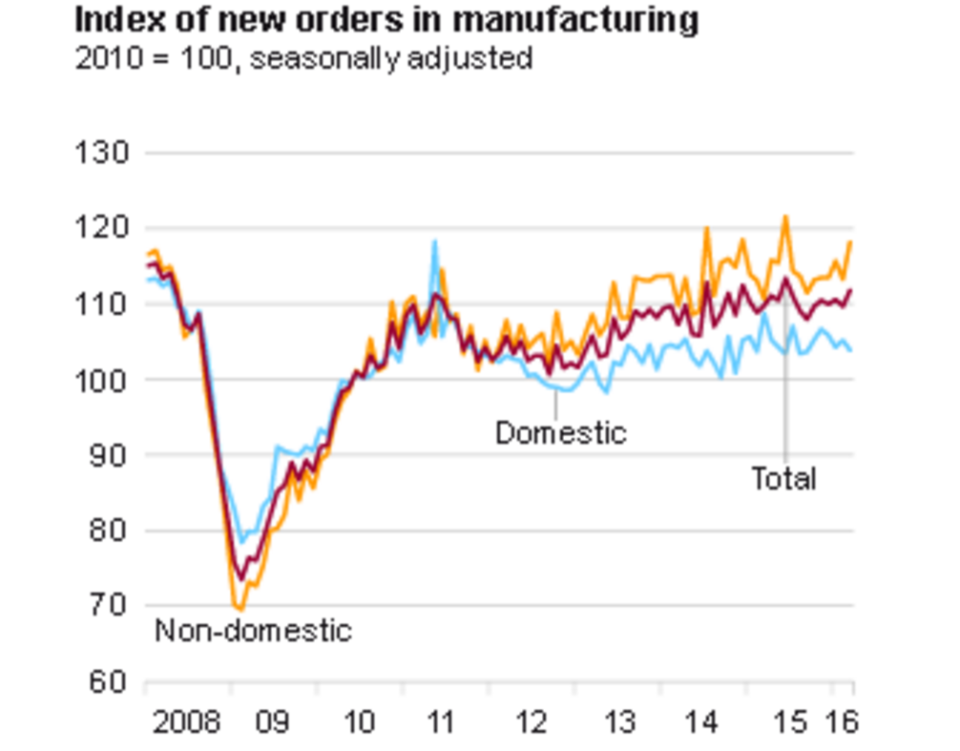Here's the big bright-spot in Europe's economic data

AP Photo/Matthias Schrader
Germany factory orders grew strongly in March, bucking the trend of lacklustre economic data coming out of Europe in recent weeks.
Orders grew by 1.9% in March according to Destatis, a huge jump from the fall of 0.8% seen in orders in February, and well above the expected gain of just 0.7% expected by economists.
On a year-to-year basis, orders were up 1.7% from the same period in 2015.
Monday's data suggests that the German factory boost isn't being driven from inside Germany, but instead being pushed by growing demand from outside Europe.
As a consequence, domestic orders actually fell in March, while the amount of orders coming from foreign countries popped by 4.3%.
Here's the chart, showing the spike in non-domestic orders on the yellow line:

AP Photo/Matthias SchraderMonday's factory order number is in sharp contrast to much of the data coming out of Europe, where a strong, sustainable recovery is proving hard to find. Eurozone countries are struggling to boost their economies strongly, and last week, at the release of Markit's monthly Purchasing Managers Index numbers, the European recovery was described, rather limply, as "tepid." As a consequence, Monday's data — German factory orders are often seen as something of a bellwether in Europe — is likely to be well received.
Here's the full release from Destatis, Germany's equivalent of the ONS:
Based on provisional data, the Federal Statistical Office (Destatis) reports that price-adjusted new orders in manufacturing had increased in March 2016 a seasonally and working-day adjusted 1.9% on February 2016. For February 2016, revision of the preliminary outcome resulted in a decrease of 0.8% compared with January 2016 (primary –1.2%). Price-adjusted new orders without major orders in manufacturing had decreased in March 2016 a seasonally and working-day adjusted 0.6% on February 2016.
In March 2016, domestic orders decreased 1.2%, while foreign orders increased by 4.3% on the previous month. New orders from the euro area were up 1.1% on the previous month and new orders from other countries increased 6.2%.
In March 2016 the manufacturers of intermediate goods fell 1.2%, while the manufacturers of capital goods showed increases of 4.0% on the previous month. For consumer goods, an increase in new orders of 1.6% was recorded.
NOW WATCH: Here's what it feels like to drink the hallucinogenic Amazonian brew ayahuasca
See Also:
SEE ALSO: The ECB's 'aggressive stimulus' is finally driving a European recovery

 Yahoo Finance
Yahoo Finance 
